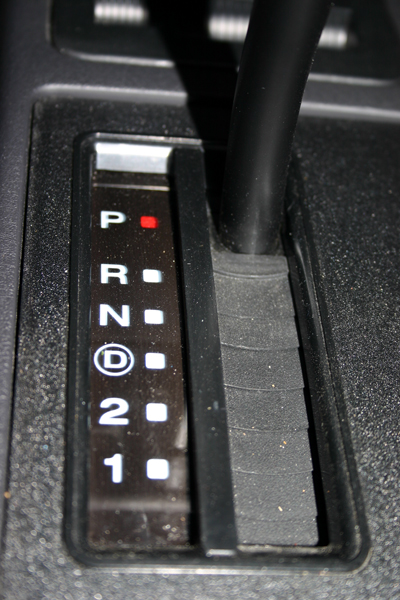Parts and operation
A hydraulic automatic transmission consists of the following parts:
Torque converter: A type of fluid coupling, hydraulically connecting the engine to the transmission. It takes the place of a mechanical clutch, allowing the transmission to stay in gear and the engine to remain running while the vehicle is stationary, without stalling. A torque converter differs from a fluid coupling, in that it provides a variable amount of torque multiplication at low engine speeds, increasing breakaway acceleration. This is accomplished with a third member in the coupling assembly known as the stator, and by altering the shapes of the vanes inside the coupling in such a way as to curve the fluid's path into the stator.
The stator captures the kinetic energy of the transmission fluid, in effect using the leftover force of it to enhance torque multiplication.
Pump not to be confused with the impeller inside the torque converter, is typically a gear pump mounted between the torque converter and the planetary gearset. It draws transmission fluid from a sump and pressurizes it, which is needed for transmission components to operate.
The input for the pump is connected to the torque converter housing, which in turn is bolted to the engine's flywheel, so the pump provides pressure whenever the engine is running and there is enough transmission fluid.
Planetary gearset: A compound epicyclic planetary gearset, whose bands and clutches are actuated by hydraulic servos controlled by the valve body, providing two or more gear ratios.
Clutches and bands: to effect gear changes, one of two types of clutches or bands are used to hold a particular member of the planetary gearset motionless, while allowing another member to rotate, thereby transmitting torque and producing gear reductions or overdrive ratios.
These clutches are actuated by the valve body (see below), their sequence controlled by the transmission's internal programming. Principally, a type of device known as a sprag or roller clutch is used for routine upshifts/downshifts.
Operating much as a ratchet, it transmits torque only in one direction, free-wheeling or "overrunning" in the other. The advantage of this type of clutch is that it eliminates the sensitivity of timing a simultaneous clutch release/apply on two planetaries, simply "taking up" the drivetrain load when actuated, and releasing automatically when the next gear's sprag clutch assumes the torque transfer.
The bands come into play for manually selected gears, such as low range or reverse, and operate on the planetary drum's circumference. Bands are not applied when drive/overdrive range is selected, the torque being transmitted by the sprag clutches instead. Bands are used for braking; the GM Turbo-Hydramatics incorporated this.[citation needed].
Valve body: hydraulic control center that receives pressurized fluid from the main pump operated by the fluid coupling/torque converter. The pressure coming from this pump is regulated and used to run a network of spring-loaded valves, check balls and servo pistons.
The valves use the pump pressure and the pressure from a centrifugal governor on the output side (as well as hydraulic signals from the range selector valves and the throttle valve or modulator) to control which ratio is selected on the gearset; as the vehicle and engine change speed, the difference between the pressures changes, causing different sets of valves to open and close.
The hydraulic pressure controlled by these valves drives the various clutch and brake band actuators, thereby controlling the operation of the planetary gearset to select the optimum gear ratio for the current operating conditions.
However, in many modern automatic transmissions, the valves are controlled by electro-mechanical servos which are controlled by the electronic engine control unit (ECU) or a separate transmission control unit (TCU). (See History and improvements below.)
Hydraulic & lubricating oil: called automatic transmission fluid (ATF), this component of the transmission provides lubrication, corrosion prevention, and a hydraulic medium to convey mechanical power (for the operation of the transmission). Primarily made from refined petroleum, and processed to provide properties that promote smooth power transmission and increase service life, the ATF is one of the few parts of the automatic transmission that needs routine service as the vehicle ages.
have reduced this cost gap.



